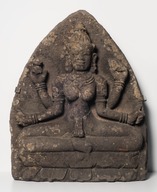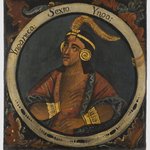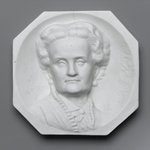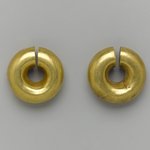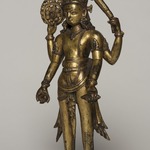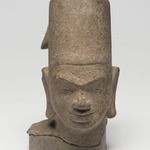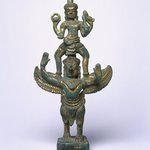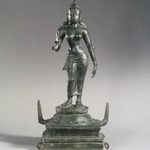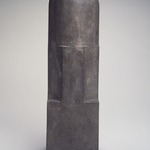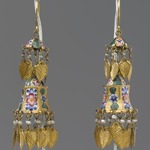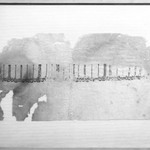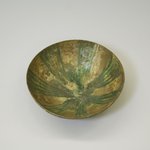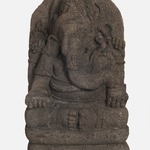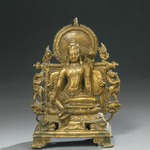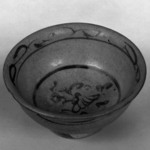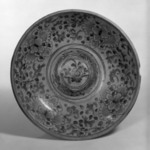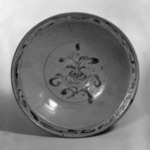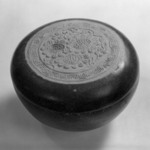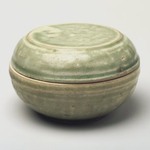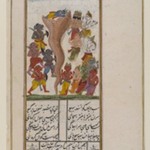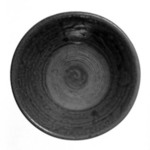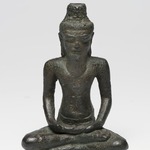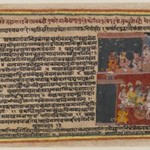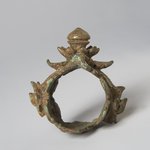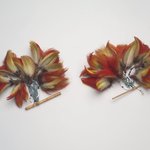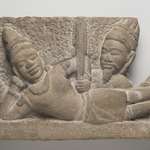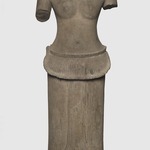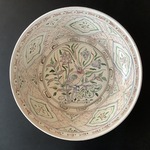Goddess Sri
Asian Art
On View: Asian Galleries, North, 2nd floor (Japan)
This sculpture is a lintel of Shri Lakshmi, which would have been located above the main door of a Champa temple. It came from Tra Kieu village, in the present province of Quangnam, a site formerly named Simhapura (the city of the Lion), in the ancient capital of Amaravati in the Champa kingdom.
Tra Kieu village is about 50 km from Danang in the southern province of Vietnam. Most of the characteristic artifacts that were found at Tra Kieu have been displayed in the Danang Museum of Champa Sculpture. The Champa temples were constructed with bricks, combined with decorative sandstone sculptural works. In this lintel dating from the seventh to the eighth centuries, Shri Lakshmi is presented as a goddess who appears popularly in Champa sculpture as well as poetic inscriptions.
The kingdom of Champa was established at the end of the second century. It had many trading centers that spread along the coast of central Vietnam. The main economic base of the Champa kingdom was maritime trade, through which they maintained contact with the commerce and culture of India, China, and the Arabian peninsula.
Text provided by Tran Ky Phuong, Curator, Museum of Champa Sculpture, Danang, Vietnam.
MEDIUM
Grey sandstone
DATES
10th century
ACCESSION NUMBER
1989.147
CREDIT LINE
Gift of R.H. Ellsworth Ltd.
CAPTION
Cham. Goddess Sri, 10th century. Grey sandstone, 32 x 24 1/2 x 10 1/2 in. Brooklyn Museum, Gift of R.H. Ellsworth Ltd., 1989.147. Creative Commons-BY (Photo: Brooklyn Museum, 1989.147_PS11.jpg)
IMAGE
overall, 1989.147_PS11.jpg. Brooklyn Museum photograph, 2021
"CUR" at the beginning of an image file name means that the image was created by a curatorial staff member. These study images may be digital point-and-shoot photographs, when we don\'t yet have high-quality studio photography, or they may be scans of older negatives, slides, or photographic prints, providing historical documentation of the object.
RIGHTS STATEMENT
Creative Commons-BY
You may download and use Brooklyn Museum images of this three-dimensional work in accordance with a
Creative Commons license. Fair use, as understood under the United States Copyright Act, may also apply.
Please include caption information from this page and credit the Brooklyn Museum. If you need a high resolution file, please fill out our online
application form (charges apply).
For further information about copyright, we recommend resources at the
United States Library of Congress,
Cornell University,
Copyright and Cultural Institutions: Guidelines for U.S. Libraries, Archives, and Museums, and
Copyright Watch.
For more information about the Museum's rights project, including how rights types are assigned, please see our
blog posts on copyright.
If you have any information regarding this work and rights to it, please contact
copyright@brooklynmuseum.org.
RECORD COMPLETENESS
Not every record you will find here is complete. More information is available for some works than for others, and some entries have been updated more recently. Records are frequently reviewed and revised, and
we welcome any additional information you might have.

